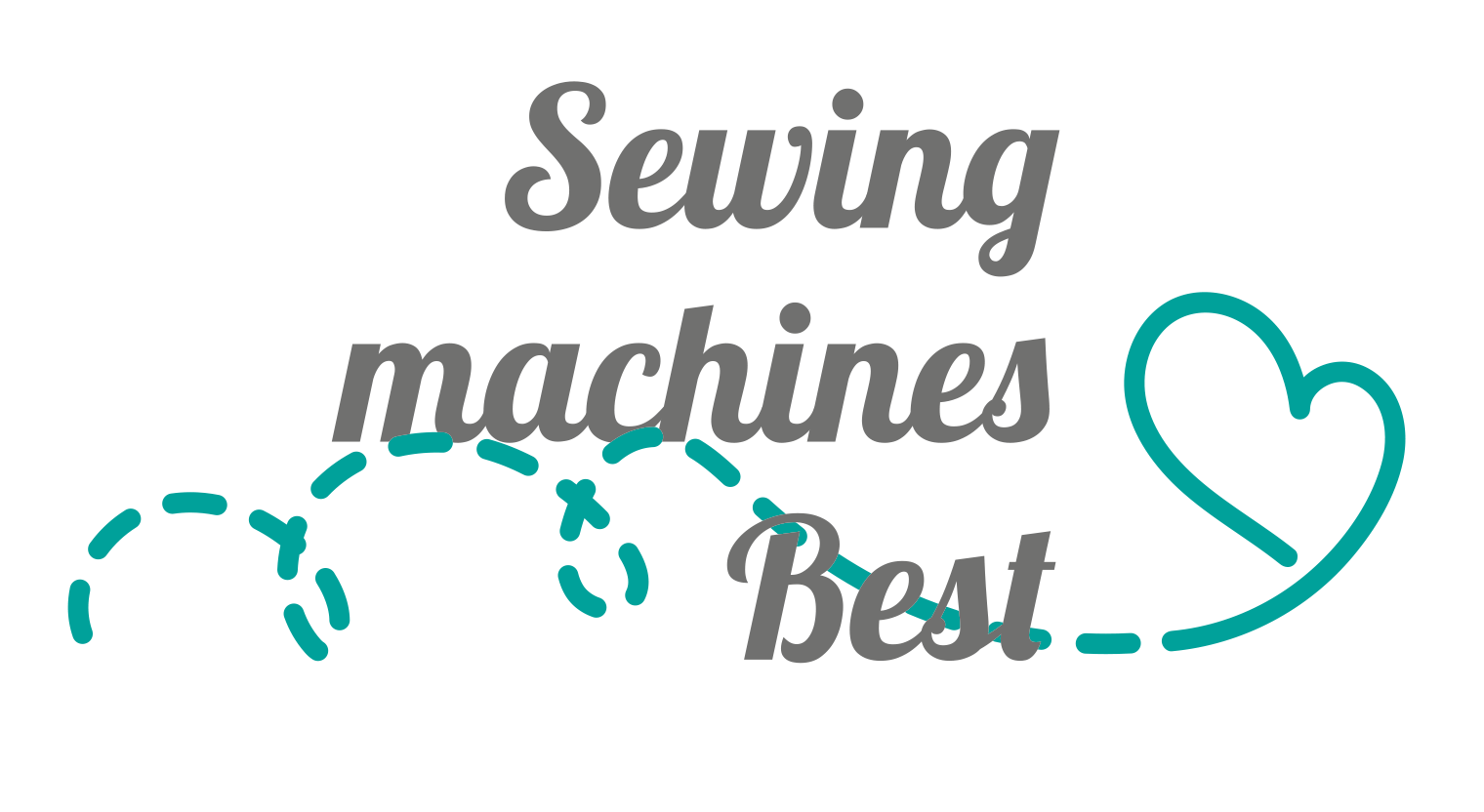Embroidery is becoming more and more popular. Embroidered apparel is in great demand and embroidery can transform any sewing project into a work of art, and give it an identity and distinctive character.
Many aspiring talented embroidery makers dream about having their designs and products shared on the international market, having their own trademark, or making a profitable business out of their favorite hobby and doing what they like.
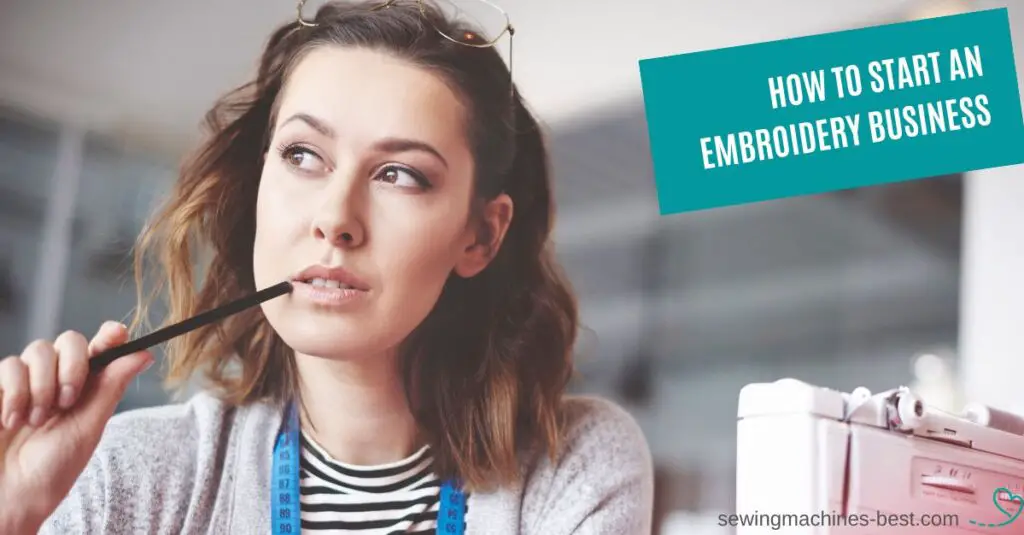
If you are interested in this article, perhaps you are one of them, and you are just dreaming about becoming an embroidery business owner, or you are ready to fulfill your dream and are thinking about how to start an embroidery business.
We have collected the most important information and the best tips for starting an embroidery business from people who have achieved success in embroidery businesses, which will help you avoid mistakes and realize your dream!
Before moving on to tips on how to start an embroidery business, let’s take a look at the embroidery industry.
Contents
- 1 Embroidery industry
- 2 Define your niche
- 3 Create an embroidery business plan
- 4 Equipment that you need to get started
- 5 The most important tips on how to start your embroidery business
- 5.1 Tip 1: Buy either a home machine or a used industrial machine
- 5.2 Tip 2: Find the right machine
- 5.3 Tip 3: Find the right digitizing software
- 5.4 Tip 4: Don’t spend all your money on getting fancy apparel for your brand
- 5.5 Tip 5: Stop wasting time building a website, use social media and word-of-mouth marketing
- 5.6 Tip 6: Get the necessary items only
- 5.7 Tip 7: Stop wasting your money on the finer details
- 5.8 Tip 8: Don’t be a perfectionist
- 5.9 Tip 9: Practice a lot
- 6 FAQ’s
- 7 Conclusion
Embroidery industry
Embroidery products attract more and more customers. Modern embroidery equipment allows you to use an unlimited number of design options, which increases the demand for embroidery and embroidery services.
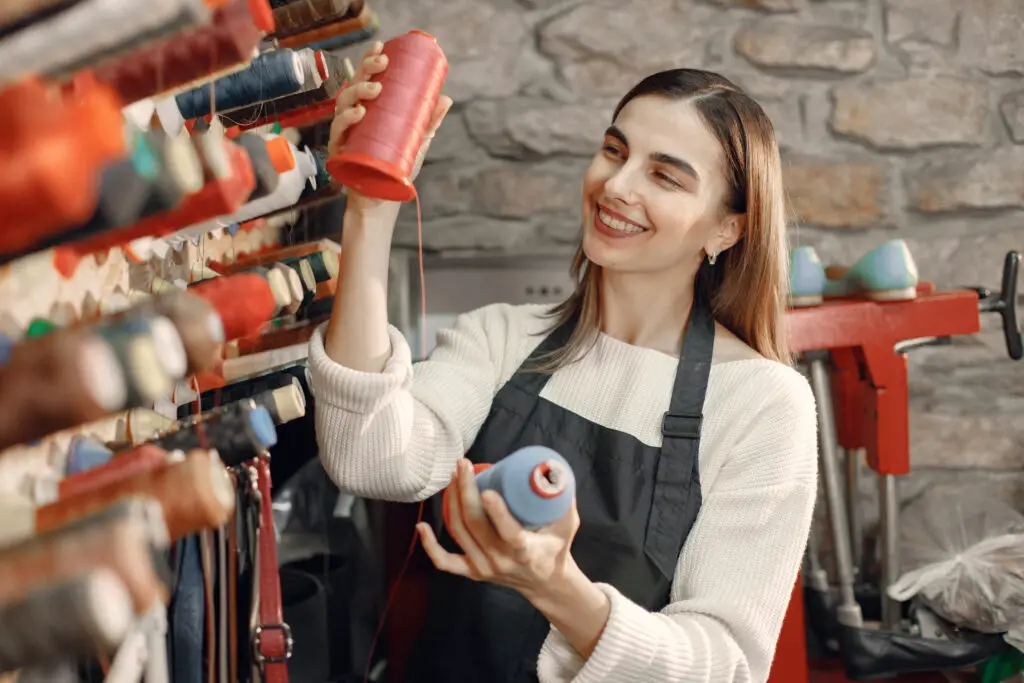
Today, the embroidery business is one of the driving factors in the growth of the textile and apparel industry.
Machine embroidery on clothing is considered the largest market, the ability to create various attractive designs, customized products and the availability of various clothing products contribute to an increase in demand in this segment.
Recently, the consumption of embroidered fabrics has been increasing, which also contributes to the growth of the market. The rapid growth of the market of embroidered interior items has led to a sharp increase in the consumption of embroidered products such as curtains, tablecloths, and other goods.
By the end user, the embroidery industry is divided into two sectors: commercial embroidery and household or home-based embroidery business. Home embroidery business occupies a prominent place in the market due to the growing consumption of products, which have various types of embroidery, which increases the demand in the home business sector compared to commercial embroidery.
Many people who are engaged in embroidery as a hobby or who just want to have some profitable business are thinking about starting an embroidery business. But is it that simple?
Define your niche
First of all, you have to think about the area in the embroidery business you want to specialize in and to stand out. Begin by researching the embroidery market to understand its different segments, trends, and potential opportunities, also don’t forget to analyze the competitors.
Also, define your customers and the demand in the market and consider your interests and skills.
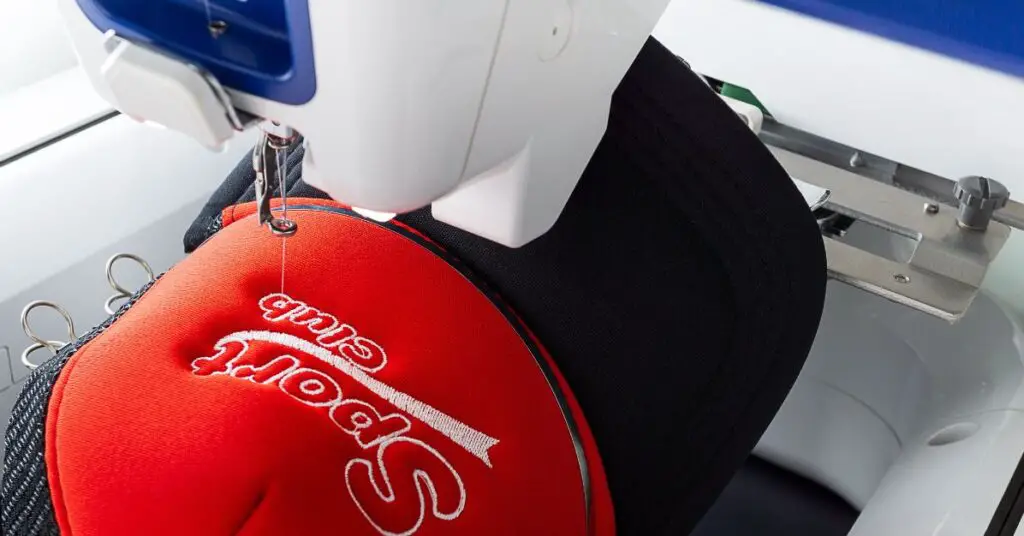
Some potential niches and ideas could be:
- Custom Apparel Embroidery: personalized designs
- Baby and Kids Embroidery: clothing, accessories, nursing decor
- Fashion and Accessories Embroidery: embroidery on handbags, shoes
- Home Decor Embroidery: designs on pillows, blankets, tablecloths, and curtains
- Wedding and Event Embroidery: personalized embroidered items for weddings, parties, and special occasions
- Corporate and Business Embroidery: logos and branding on corporate attire, workwear, and promotional items
- Pet Accessories Embroidery: embroidered items like collars, leashes, and pet clothing
- Personalized Gifts Embroidery: custom embroidered gifts for special occasions like birthdays, anniversaries, and holidays
- Lifestyle and Hobby Embroidery: embroidery for specific hobbies like gardening, cooking, or outdoor activities.
Create an embroidery business plan

Creating a business plan for an embroidery business involves defining your goals, strategies, target market, financial projections, and more. Here’s a short step-by-step guide:
- Executive Summary: Briefly describe your business, its mission, products/services, target market, and unique value proposition.
- Market Analysis: Research your target market, competitors, and industry trends. Who are your ideal customers and what are their needs?
- Products and Services: Detail what you want to offer. Which products? I already mentioned a lot of ideas and niches. Also, include pricing strategies.
- Marketing and Sales: Outline how you want to reach your customers (online or local) and advertising (f.e. social media). How do you plan to attract customers?
- Operational Plan: Describe your daily operations, production process, equipment, and suppliers.
- Financial Plan: Important is also the financial part, because the business should not only be fun, it should also bring profit. This part presents startup costs, revenue projections, expenses, and cash flow.

It sounds like a lot but it’s important, it helps you to clarify your business idea, make informed decisions and navigate challenges.
Equipment that you need to get started
So, if you want to learn how to start an embroidery business, in this part of the article we’ll go over the basic equipment you need to get started.
Embroidery machine
Now there are many embroidery machines you can buy depending on your budget from home machines to industrial ones.
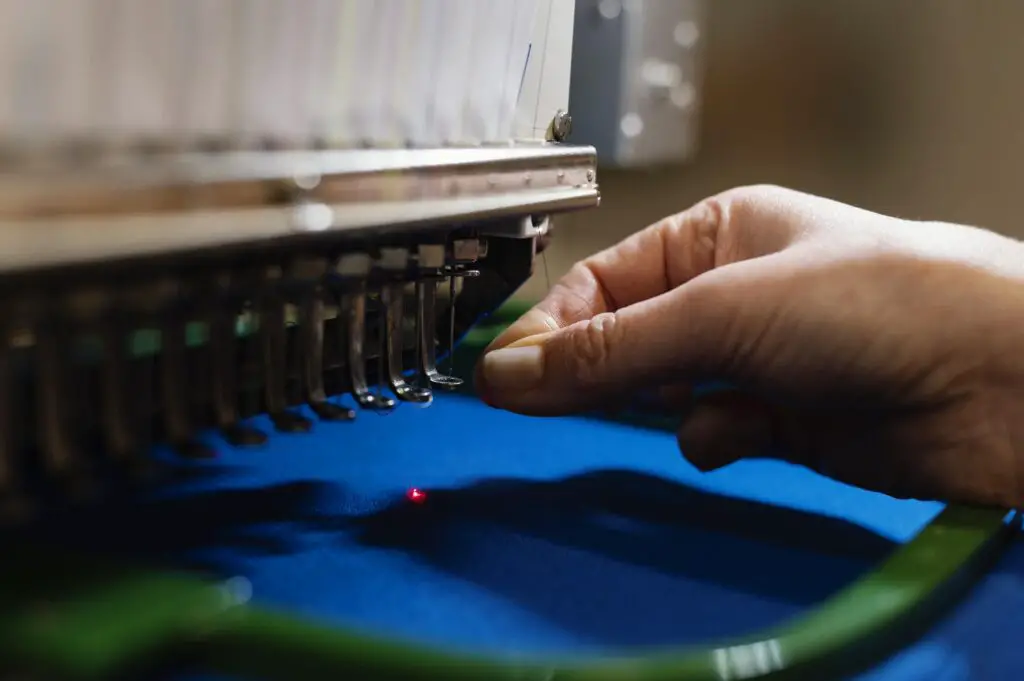
If you’re just getting started, the best way to go is to get a home machine. Most of these only have one needle, but they’re a lot easier to learn and will still give you really good results.
The best embroidery machine to start a home business is Brother SE600. Almost any business owner knows this model, and many of them recommend starting with it. This computerized machine allows you to perform almost unlimited design options.
Their only downside is that it’s a lot harder to do things like hats or bags although not impossible with a special hoop and that you’ll have to switch the thread color every time.
Now there are semi and industrial machines that range anywhere from 6 to 20 needles, but they are a lot more expensive and they require quite a bit of training for them.
Their positive is that they will allow you to embroider almost anything on them.
Embroidery thread
You’re probably going to be super confused when you search up threads and you’ll find anything from 30 to 60 weight. Basically what it means is the thickness of the thread.
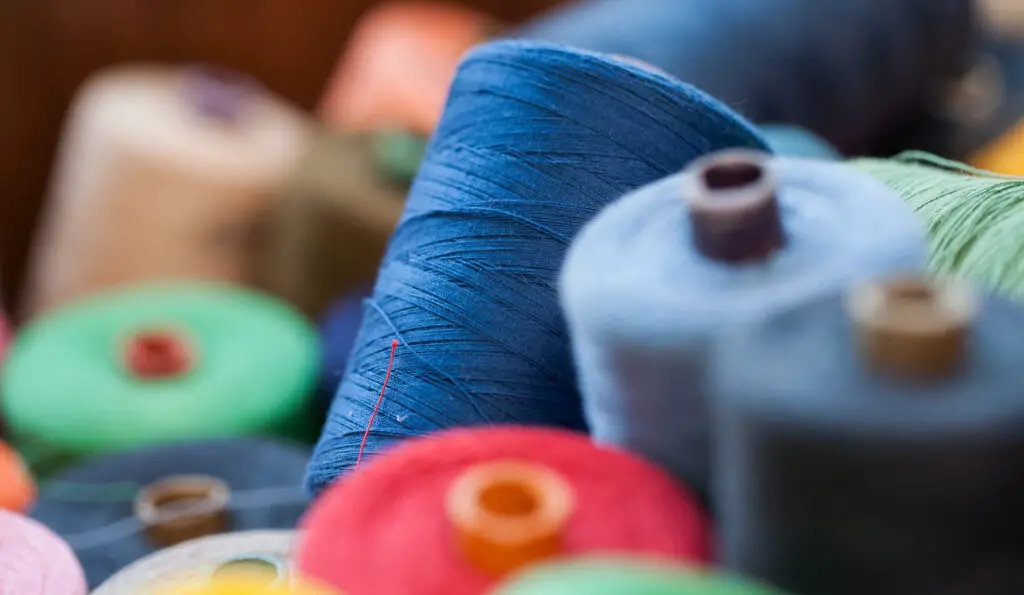
40 weight is the most common for embroidery purposes, and the needle size is 75/11. If you’re just starting then you should look for these as they are the general sizing.
If you’re thinking of doing small super detailed tiny work, then you might want to find some thinner threads as well as needles.
“The brand of threads I got started with is called Simthread . You can find these on Amazon pretty easily. Nowadays I use my Madeira threads and from what I know they are the most popular. I buy 1 000 meter classic roy and 40. They’re high quality and softer compared to polyester threads.”
Stabilizers
What stabilizers do is support the fabric and make it more durable while it’s being embroidered.
There are different kinds of stabilizers and each one of them has its own purpose. Cutaway is the go-to for things such as shirts, sweaters, and hoodies as they work better with stretchy fabrics. Tearaway might not support it so well. Tearaway works amazingly on things like caps bags and even shoes that aren’t that stretchy.

Now some people like to use fabric glue spray to support the stabilizer onto the fabric. It can be pretty frustrating when you’re new and not used to it, so be patient and practice a lot for fabrics. You can get some shirts or sweaters from stores to embroider on.
If you’re trying to create a business then you can look for more wholesale apparel which will lower the cost per item. It’s totally up to you what to go for.
Some other tools
Some other tools include scissors and tweezers. They are good to clean up any threads that are getting in the way after your embroidery is done.
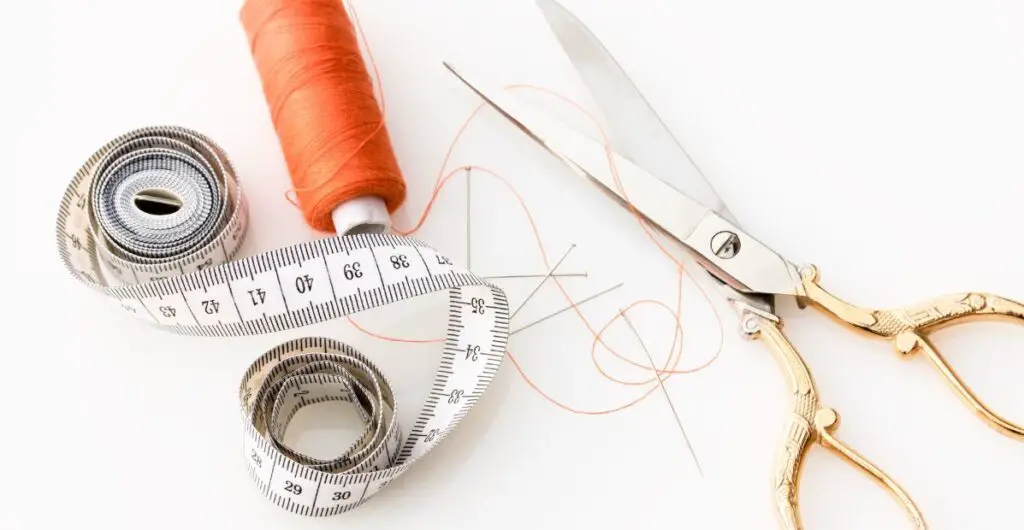
As well as oil to keep your machine running nice and smooth. Remember that you gotta do proper maintenance on your machine if you want to keep it running well for a long time.
Designs
How are you going to get your stuff embroidered? This is honestly a whole other side of embroidery.
Some machines allow you to embroider some letters straight from the embroidery as well as some patterns, but if you want to create your own designs or make custom embroidery, then you’re going to need a digitized file.
You can purchase an embroidery file or hire someone to make one for you. There are many sites like Etsy or Fiverr where you can buy online these services for you. Make sure that this includes the format that your embroidery machine needs as well as that the design fits your hoop size.
If you want to create your own designs or to make custom embroidery yourself, then you’re gonna need digitizing software. These also have different price ranges depending on what you need.
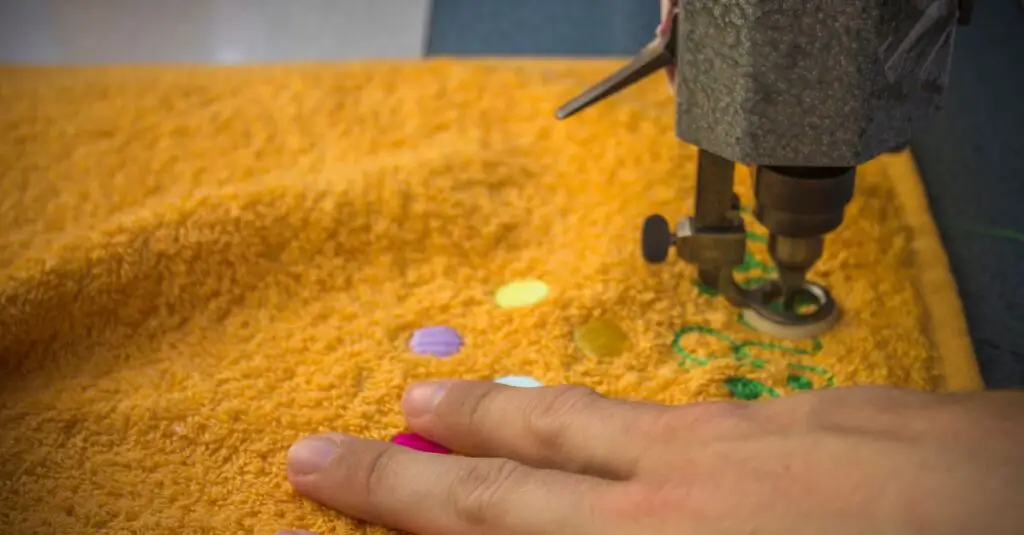
Some embroidery companies like Brother have their own digitizing software. The one they have is called PE Design, it’s actually pretty good. There’s also Welcome which has different software, that you can purchase depending on the level of digitizing you need.
PE Design and Wilcom Hatch seem to be the most user-friendly and affordable. With these, you can import your image and get digitized.
You will definitely need a lot of trial and error, so again be patient with yourself, don’t rush, and enjoy the process of learning.
All of this might seem impossible to get good at embroidery when your embroidery isn’t coming out well, but keep at it and you’ll notice the things you can slowly start improving on. Embroidery is hard work but extremely rewarding.
The most important tips on how to start your embroidery business
We have collected some tips and tricks that will help you avoid some mistakes made by the owners of embroidery businesses and facilitate your embroidery experience.
Tip 1: Buy either a home machine or a used industrial machine
If you have never tried embroidery before, but want to start an embroidery business, first you need to figure out if you actually enjoy embroidering.
This is very important if you really want to do an embroidery business.
“I know a lot of people got started in embroidery business who after they actually did it for a while they were like oh this is not actually for me and they ended up spending so much money and setting up all of the business just to realize that it wasn’t something they actually enjoyed. “
When you’re doing your first embroidery business, you don’t know how embroidery equipment actually works, so it’s very important for you to take time to learn how to work with one of them.
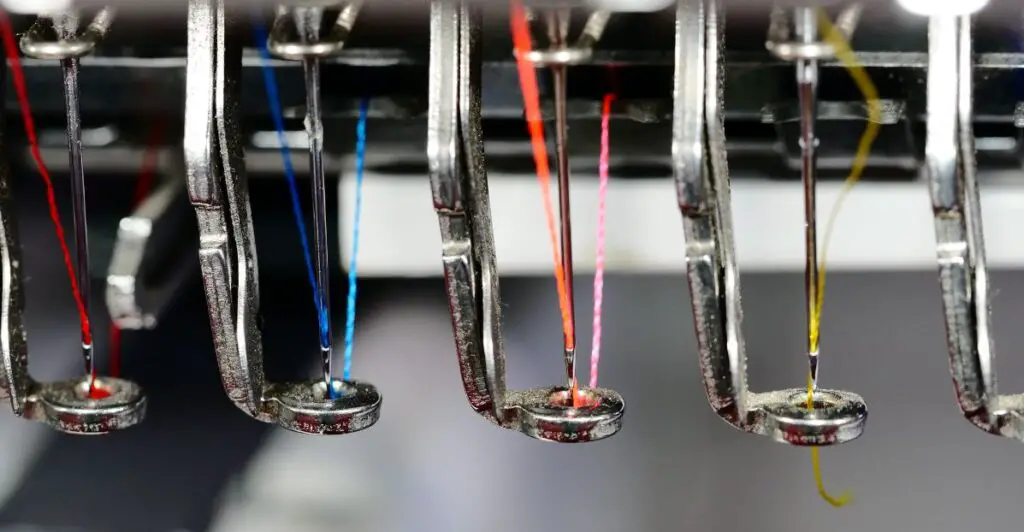
Many owners of successful embroidery businesses advise buying either a home machine or get a used industrial machine or any other home machine you want to get started with.
So you can start testing out embroidery designs and start playing around with it and learn how it actually works.
This allows you to figure out if this is actually something that you like, and make sure 100% that starting an embroidery business is the right decision.
Tip 2: Find the right machine
When you get started it’s very easy for you to get overwhelmed by knowing what machine to get you.
Before choosing an embroidery machine, you should determine your embroidery business niche, and your ideal customer and learn his or her needs.
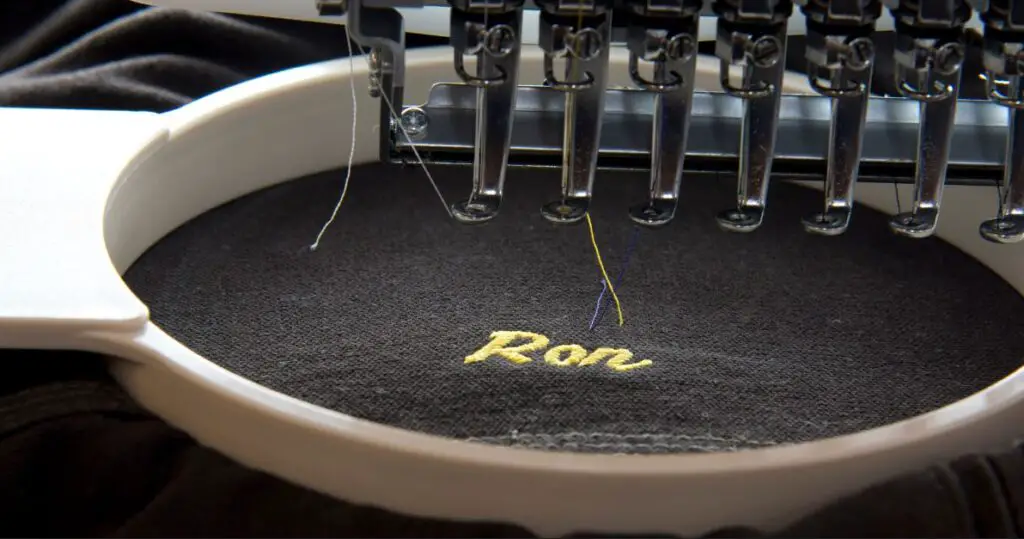
So, the reason why it’s important to first think of who your customer is going to be is so that you can stock up on the right materials and tools needed to serve those customers.
So, you’re gonna need a machine that can keep up with this demand, you’re also gonna need to make sure that your machine is compatible with the different accessories that you need in order to serve your market.
“I wanted to start an embroidery business and I decide I want to tap into the fraternity and sorority market. I know what I’m going to sell to them just by knowing who that customer is. These Greek organizations are going to need a lot of bulk uniform apparel so I’m gonna want to go with a multi needle over a single needle.”
When choosing an embroidery machine, it is also very important to know how you want to scale your business.
“When we started we went with the SE600, which at the time was a really good machine because it allowed us to learn how to embroider, but the issue was that we moved on from it way too fast then we ended up getting the SE 1900, which was a bigger hoop and that’s the main reason why we decided to ditch this se600 it’s not because it was a bad machine it just wasn’t the right one for us meaning that the hoop was a little too small and the SE1900 just had a bigger hoop for us to do more chess designs like we wanted to do in the beginning .”
Researching the right machine and figuring out what you can play with on your budget so you don’t have to buy the machine, and then right away feel like, this is not enough for me.
Tip 3: Find the right digitizing software
Choosing the right software is pretty important, as software takes quite a bit of time for you to really learn and get used to it.

So, finding that one that works for you is really good, because then if you can stay with it and you can keep working on it then you’re gonna get far ahead on your digitizing process, that’s if you choose to digitize, of course, you can also hire digitizers to do the work for you, and that works fine as well.
Here wefound a website with 8 Best Free Embroidery Digitizing Software in 2023.
Tip 4: Don’t spend all your money on getting fancy apparel for your brand
We all want to have our best embroidery put on the best sewing projects, we want to give our clients the best embroidery designs they’ve ever seen, and we want to give them the best quality out there, and although that’s a really nice thing that is not really the smartest thing to do when you’re first starting out your business.
Why? Because you’re spending a lot more capital that you could be using for other things in your business.
And on top of that, it doesn’t mean that just because it’s a higher quality, it doesn’t mean that your design is actually going to sell.
” I started with shirts not of high quality, but also not of poor quality, I started selling some shirts, and to this day I’ve never really gotten any actual kind of complaints from people, these shirts were affordable, I could actually create a couple of them, it wasn’t breaking my wallet, and I could actually get some sales going off from that to upgrade other things in my embroidery business.”
So, again, we all want to have the best for our business and we want to take your brand to a new level, but that’s not really the case when you are just starting an embroidery business.
It’s actually going to stop you from being able to push your actual company if you’re taking too much time building out your website and doing all these fancy things to this website that are going to make you more sales, then that’s taking time away from you from actually making sales.
If you, for example, created your shop, and then the next day you create some reels, some tik-toks on social media, Facebook, post it wherever you want, get a couple of friends and family to like and share.

That is 100% going to make you more sales and more new customers from the beginning than you to make the website take a couple of weeks to create and then figure out a way to make sales.
In simple terms, don’t rely so much on customers coming to your website, instead just share it everywhere as much as you can, and customers will find you and contact you to make those sales.
You definitely need to list your business on Google, this will allow local customers who are searching for embroidery services in your area to find you listing your business on Google is also absolutely free and it gives you a platform for your happy customers to go ahead and leave reviews that way your potential customers will be more attracted to your business.
Tip 6: Get the necessary items only
The thing about embroidery is that there are so many little accessories that you can get a little carried away and buy more than you need for embroidery work. This also applies to fabric and other sewing products.
When you decide to upgrade to a different kind of quality material or something like that, you can put your money on something else, that way, you can grow your business.
Tip 7: Stop wasting your money on the finer details
Obviously, we want to be recognized as a brand: we want to have our logos, we want to have our tags, we want to have our cool website, and this is really cool, and this is something that you should be doing once you’re an established brand.
When you’re just starting a business that should not be your priority in fact you should not be letting that stop you from getting started to make money right now.
A lot of people out there are trying to for example get the cool website or get the customized label on the back and everything branded right away.
This is going to delay for a couple of weeks which means that you’re not going to be making that money and making those sales that you could be doing and then potentially just buying more of that once you’re actually established and saving extra money.
When you’re just starting a business, you want to actually try and just post it on social media: make a quick logo, post it there, start making your videos, and share it with family and friends.
So then those people can be the first ones to buy your products, and that way, with that money that you get you can start spending it on branding.
Tip 8: Don’t be a perfectionist
We are literally our worst customers. We finish the embroidery, we see it and we’re like: this this this this and this, those are all the mistakes, this is unacceptable.
That happens because we are seeing the process, we’re seeing the mistakes that happen, but the customer is not really gonna see any of those.
Customers are gonna get that thing that you made for them and they’re gonna be so happy, they’re gonna be so excited unless it’s a really botched job.
Usually, it’s not that bad and we tend to overthink, so remember to not be so perfect and to actually work on constantly improving, instead of trying to be perfect right away.
“I remember when I was like looking at the design and I was like I am so unhappy on this, and that actually pushed me back from being able to sell more, to being able to make more designs, because I just wasn’t happy with it, and looking back at it, I wish I did push those out more.”
Tip 9: Practice a lot
This goes both for embroidery and digitizing. The unfortunate thing about embroidery is that it’s not easy.
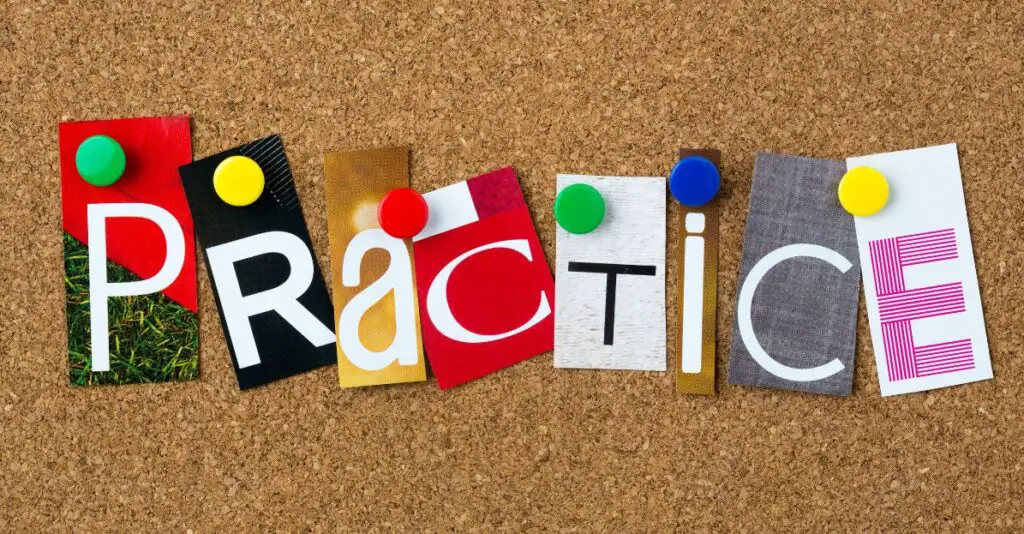
It is not an easy field to get started in, there is a lot of information on both sides that you need to know, and once you know those things, you have to apply them constantly to acquire embroidery skills.
And even when you have acquired good skills, you know everything and how to do it right there might still be some mistakes that you won’t know how to fix now.
Read also: How To Remove Embroidery
Practicing a lot even if it’s very little will get you way better results in the long term than trying and do a crazy design or a crazy embroidery and it doesn’t come out right and then you end up kind of giving up.
“It’s better to do tiny little steps on embroidery every single day or whenever you can, that could be like every other day twice a week as much as you think you can do and just take the time to improve little things instead of trying to do every single thing at once. And honestly just remember to give yourself a break, take it easy, don’t be so tough on yourself because in this field like I said it is already hard enough so be kind to yourself and allow the experience to be fun and entertaining rather than just stressful .”
FAQ’s
How much does it cost to start an embroidery business?
It’s difficult to provide an exact cost without knowing the specifics of your business. Generally, a small home-based embroidery business might start with a few thousand dollars, while a larger commercial operation could require tens of thousands or more. For a rough breakdown you should include the following costs: Embroidery Equipment, Workspaces and Utilities, Materials and Supplies, Marketing and Branding, Business Setup and Licensing (Business Registration), Miscellaneous Expenses (Furniture and Fixtures, Packaging and Shipping, Insurance), Initial Inventory.
Is embroidery a profitable business?
Yes, embroidery can be a profitable business, but success depends on factors like market demand, quality of work, effective pricing, and efficient operations. Specializing in a niche, delivering high-quality craftsmanship, and implementing strong marketing strategies can contribute to profitability. Thorough research, proper planning, and adapting to market trends are essential for a successful and profitable embroidery business.
What equipment do I need to start an embroidery business?
To start an embroidery business, you’ll need essential equipment for designing and producing embroidered items. Here’s a basic list of equipment:
Embroidery Machine: The core equipment for creating embroidered designs.
Hoops and Frames: Various sizes of embroidery hoops and frames.
Digitizing Software: Software to create, edit, and convert designs.
Computer: A computer to run the digitizing software.
Threads: High-quality embroidery threads in a variety of colors.
Stabilizers and Backing: Materials used to stabilize fabric during embroidery.
Embroidery Needles: Needles designed specifically for embroidery machines.
Scissors and Snips: Cutting tools for trimming threads and materials.
Worktables and Surfaces: Tables or surfaces for setting up the embroidery machine and workspace.
Lighting: Adequate lighting to ensure clear visibility while working.
Storage Solutions: Storage for threads, materials, and finished products.
Miscellaneous Tools: Tweezers, marking tools, rulers, and other small tools for precision work.
Conclusion
We hope this article was helpful and helped you learn more about how to start an embroidery business.
When starting an embroidery business, always remember that this is a business, and the embroidery business is about making money with embroidery.
Thanks so much for reading!
Before starting a business you can also try embroidery with a normal sewing machine, I already wrote an article about it: How to embroider with a sewing machine: Start it right now!

Hi everyone and welcome to my blog!
My name is Liz, and I started sewing when my son was born. First I repaired the holes in children’s pants, then I dared to do more challenging projects like sewing home decor and children’s clothing. Now it is my hobby where I come to rest, let my creativity run wild, and create things that please me and enhance my home.
I would love to help other sewing beginners and enthusiasts through my blog by sharing tips and tricks for this great hobby.
